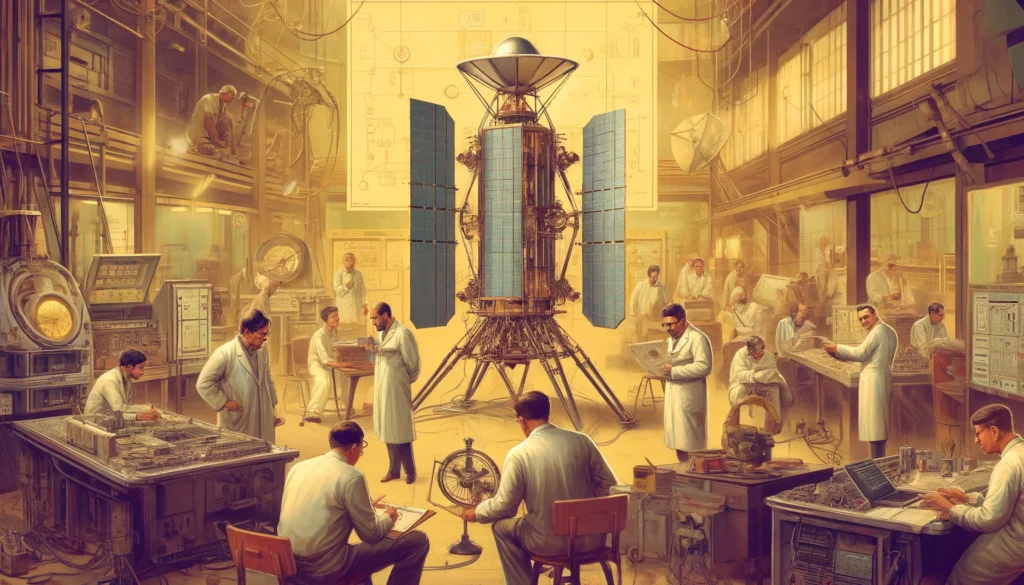On April 19th, 1975, a significant milestone in the annals of space exploration was achieved by India. The launch of Aryabhata, India’s first satellite, marked its foray into the cosmos. As we approach the anniversary of this historic event on April 19th, 2024, it’s an opportune moment to revisit and celebrate the achievements, challenges, and legacy of Aryabhata. This blog aims to shed light on the remarkable journey of Aryabhata, from its inception to its mission and its enduring influence on space exploration.
Historical Context and Development
The 1970s were a vibrant era for space exploration globally. Amidst the intense space race primarily dominated by the USA and the USSR, India initiated its own space journey with the establishment of the Indian Space Research Organization (ISRO). Aryabhata was the first project under this new ambitious program, named after the ancient Indian mathematician, showcasing the blend of India’s rich heritage with its modern scientific aspirations.
The satellite itself was a marvel of engineering. Designed as a 26-sided polygon with a diameter of 1.4 meters, Aryabhata was covered with solar cells on all faces, except the top and bottom. This design was pivotal for powering the satellite using solar energy. The project was spearheaded by Professor U. R. Rao and his dedicated team in Bangalore, who managed to construct the satellite in just 20 months.

Launch and Mission Objectives
The excitement was palpable on the day of the launch at the Volgograd Launch Station in Russia. The chosen vehicle, a Soviet Intercosmos C-1 rocket, was part of a collaborative effort between India and the Soviet Union. Aryabhata’s mission was ambitious – it was designed to conduct experiments in X-ray astronomy, aeronomics, and solar physics. These experiments were aimed at deepening our understanding of the cosmos, particularly in studying celestial bodies and solar phenomena.
Challenges and Early Termination
However, space exploration is fraught with unforeseen challenges. Just four days into the mission, Aryabhata faced a critical power failure. This abrupt end to the power supply halted all communication and experiments, casting a shadow over the mission’s initial success. Despite this setback, the incident provided ISRO with valuable lessons in spacecraft design and management, lessons that would inform future projects.
Legacy and Impact
Despite its early operational termination, Aryabhata remained in orbit for nearly 17 years. This longevity is a testament to the robustness of its construction and the forward-thinking designs of its creators. Aryabhata’s mission laid the foundational stones for India’s future in space technology, paving the way for more sophisticated satellites and space exploration projects.
The satellite’s eventual re-entry into Earth’s atmosphere on February 11, 1992, was symbolic, marking the end of an era but also the beginning of a new chapter in India’s space narrative. The experiences and data gathered from the Aryabhata mission have been crucial in shaping the direction of ISRO’s subsequent endeavors.

Conclusion
As we commemorate the launch of Aryabhata on its anniversary in 2024, it’s important to reflect on its contributions not just to India’s space history, but to global space exploration. Aryabhata was more than a satellite; it was a symbol of India’s aspirations and its capabilities. Its legacy continues to inspire new generations of scientists and engineers, proving that with vision and perseverance, the sky is not the limit, but just the beginning. Let us keep looking up and moving forward, inspired by the lessons and legacies of our past achievements.
Author’s Note
As we look back on the achievements of Aryabhata, India’s first satellite, we are reminded of the bold steps taken by pioneers in Indian space exploration. This blog aims to celebrate and reflect on those efforts and their lasting impact on the field. Thank you for joining me on this journey back in time and forward in inspiration.
G.C., Ecosociosphere contributor.
References and Further Reading
- “The Indian Space Programme” by Gurbir Singh – This book offers an extensive look at India’s journey in space exploration, including the Aryabhata satellite.
- “From Fishing Hamlet to Red Planet” edited by P.V. Manoranjan Rao – Provides a detailed history of ISRO and its missions, with a focus on the early days and the launch of Aryabhata.
- “Wings of Fire” by A.P.J. Abdul Kalam – While primarily an autobiography of Dr. Kalam, this book offers insights into India’s space endeavors during the time of Aryabhata.





Comments
We as Indians are not only intelligent but hard working and can create wonders with minimum infrastructure.we only need conducive environment and political will